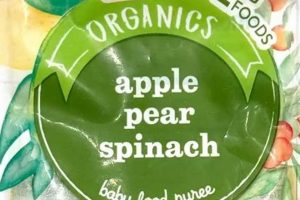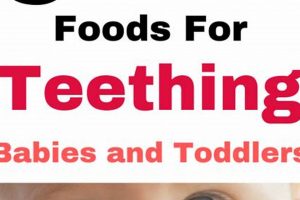The sustenance of young cervids, commonly referred to as fawns, is initially provided through maternal milk. This milk is specifically formulated to meet the nutritional demands of the rapidly growing offspring, containing a high concentration of fats, proteins, and essential minerals crucial for bone development, muscle growth, and overall health. An example is the white-tailed deer fawn, which relies solely on its mother’s milk for the first few weeks of life.
Adequate nutrition during this early stage is paramount for survival and future reproductive success. The quality and quantity of maternal milk directly impacts the fawn’s immune system, disease resistance, and ability to thrive in its environment. Historically, indigenous populations understood the importance of protecting does (female deer) during lactation periods to ensure healthy fawn populations, recognizing the direct link between the mother’s well-being and the offspring’s development.
Consequently, understanding the specific nutritional requirements of fawns, the composition of maternal milk, and potential supplementary feeding options (in cases of orphaned or abandoned young) is critical for wildlife management and conservation efforts. Further discussion will explore these aspects in detail.
Management Strategies for Early Cervid Nutrition
This section provides specific guidelines for supporting the healthy development of young cervids, particularly concerning their early dietary needs.
Tip 1: Monitor Maternal Health: Ensuring the nutritional well-being of the mother deer is crucial. A healthy doe produces richer, more abundant milk, directly benefiting the fawn’s growth and development. Observe does for signs of malnutrition or disease and intervene as necessary within established wildlife management protocols.
Tip 2: Protect Lactation Habitats: Areas providing ample forage and secure cover for lactating does are essential. Minimize disturbance in these areas, particularly during the peak fawning season. Identify and protect critical habitats such as early successional forests and meadows.
Tip 3: Supplement Strategically (if necessary): In cases of orphaned or malnourished fawns, carefully consider supplemental feeding options. Consult with wildlife biologists to determine appropriate feed formulations and delivery methods that mimic the natural composition of maternal milk and minimize dependency.
Tip 4: Prevent Overgrazing: Overgrazing by excessive deer populations can deplete the food resources available to both does and fawns. Implement population management strategies, such as regulated hunting, to maintain a sustainable balance between deer and their habitat.
Tip 5: Provide Mineral Supplements: Ensure adequate mineral availability, especially calcium and phosphorus, which are vital for bone growth in developing fawns. Provide mineral licks or blocks in areas frequented by deer, adhering to local wildlife regulations.
Tip 6: Reduce Predator Pressure: High predator populations can significantly impact fawn survival rates. Implement predator management strategies, where appropriate and permitted, to reduce fawn mortality. This may involve habitat manipulation or targeted predator control.
Effective implementation of these strategies can lead to healthier fawn populations and improved overall deer herd management. Prioritizing these approaches helps ensure the long-term health and vitality of cervid populations.
The following sections will delve into the specific details of each of these strategies.
1. Maternal Milk Composition
Maternal milk composition represents the foundational element of a young deer’s diet. It serves as the primary, and often sole, source of nutrition for the first several weeks or months of life. The specific constituents of this milk are critical determinants of fawn survival and development. Variations in fat content, protein profiles, and mineral concentrations directly influence growth rates, immune system function, and overall physiological well-being. For example, white-tailed deer milk exhibits a high fat content relative to that of other ungulates, which provides the rapid energy required for thermoregulation and growth in cold environments.
The precise composition of maternal milk is not static, changing over the course of lactation to adapt to the fawn’s evolving needs. Colostrum, the milk produced immediately after parturition, is particularly rich in antibodies, providing essential passive immunity against pathogens. As the fawn matures, the milk’s fat and protein content increase to support accelerated growth and muscle development. Understanding these dynamic shifts in milk composition allows for informed interventions in situations where artificial feeding is necessary, such as in cases of orphaned fawns. Formulas designed to mimic the changing composition of maternal milk are more likely to promote healthy growth and survival.
In conclusion, maternal milk composition is intrinsically linked to the concept of optimal early nutrition in deer. Its carefully balanced nutrient profile is essential for establishing a strong foundation for future health and reproductive success. Disruptions to maternal health or milk production, whether due to malnutrition, disease, or habitat degradation, can have cascading effects on fawn survival rates and overall deer population dynamics. Therefore, conservation and management strategies must prioritize maintaining healthy maternal populations to ensure adequate nourishment for their offspring.
2. Early Forage Transition
The early forage transition represents a critical juncture in the life of a young deer. While maternal milk provides essential nutrients initially, this sustenance is finite. The fawn must adapt to consuming solid vegetation to sustain its growth and development. This transition is not merely a change in diet; it is a complex physiological and behavioral adaptation. The timing and success of this transition are directly linked to the fawn’s overall health and its ability to thrive. Insufficient or inappropriate forage can lead to malnutrition, weakened immune systems, and increased susceptibility to disease and predation. For example, if a fawn attempts to consume coarse, indigestible forage too early, it may experience digestive distress and fail to obtain adequate nutrition, leading to stunted growth and reduced chances of survival.
The availability and quality of suitable forage play a pivotal role in facilitating a successful transition. Young, tender shoots of grasses, forbs, and browse offer the most easily digestible nutrients for developing fawns. The presence of diverse plant communities provides a wider range of essential vitamins and minerals, further supporting optimal growth. Furthermore, the mother deer plays a crucial role in guiding the fawn’s forage selection, demonstrating appropriate feeding behaviors, and leading the fawn to areas with abundant and suitable vegetation. Areas impacted by overgrazing or habitat degradation often lack the necessary forage resources, resulting in delayed or incomplete transitions and negatively impacting fawn survival rates. Conversely, well-managed habitats with diverse and abundant forage options support healthy transitions and robust fawn populations.
In conclusion, the early forage transition is an indispensable component of ensuring adequate nutrition for baby deer. Its success is dependent on a confluence of factors, including the fawn’s physiological readiness, the availability of suitable forage, and the guidance of the mother deer. A comprehensive understanding of these factors is essential for effective wildlife management and conservation efforts aimed at maintaining healthy and resilient deer populations. Prioritizing habitat management practices that promote diverse and abundant forage resources is paramount for supporting successful early forage transitions and maximizing fawn survival rates.
3. Nutritional Supplementation Options
Nutritional supplementation options become relevant when natural sources of sustenance for young cervids are inadequate or unavailable. These interventions aim to provide the necessary nutrients for survival and healthy development in situations where maternal milk is absent or insufficient, or where habitat degradation limits natural forage.
- Milk Replacers for Orphaned Fawns
Formulated milk replacers are designed to mimic the composition of maternal milk, providing essential fats, proteins, vitamins, and minerals. These replacers are critical for orphaned or abandoned fawns, offering a primary source of nutrition when natural maternal care is absent. The success of these supplements hinges on their appropriate formulation and administration, as deviations from the natural milk composition can lead to digestive issues or nutritional deficiencies.
- Creep Feeding Strategies
Creep feeding involves providing supplemental food sources that are accessible to fawns but less accessible to adult deer. This approach can be beneficial in areas with limited forage or during periods of nutritional stress. Creep feed formulations typically include high-quality grains, proteins, and minerals designed to support rapid growth and development. Effective creep feeding requires careful monitoring to ensure that fawns are actively consuming the supplement and that it does not create dependence, hindering the transition to natural forage.
- Mineral Supplementation
Mineral deficiencies can significantly impact fawn development, particularly bone growth and immune function. Mineral supplementation, through salt and mineral licks or fortified feed, provides essential micronutrients like calcium, phosphorus, and selenium. This intervention is particularly important in areas with mineral-deficient soils or during periods of rapid growth. The appropriate type and dosage of mineral supplements should be determined based on local soil conditions and the specific nutritional needs of the deer population.
- Emergency Feeding During Extreme Weather
Severe weather events, such as prolonged winters or droughts, can drastically reduce the availability of natural forage, leading to nutritional stress in deer populations. Emergency feeding programs may be implemented to provide supplemental food during these periods, using high-energy feeds like corn or hay. Such programs require careful planning and execution to minimize negative impacts, such as habituation and disease transmission. They serve as short-term solutions to mitigate the effects of extreme environmental conditions on deer populations.
The application of nutritional supplementation options requires careful consideration of the specific circumstances and potential consequences. While these interventions can be valuable tools for supporting fawn survival, they should be implemented strategically and with a thorough understanding of the ecological context. The goal is to provide the necessary nutritional support without disrupting natural foraging behaviors or creating long-term dependencies.
4. Habitat Food Availability
Habitat food availability serves as a foundational element in the sustenance and survival of young deer. The presence, abundance, and nutritional quality of forage within their habitat directly influence the growth, health, and ultimately, the population dynamics of deer herds. Understanding the intricate link between available food sources and the nutritional requirements of fawns is essential for effective wildlife management and conservation.
- Forage Diversity and Nutritional Value
The diversity of plant species within a deer’s habitat dictates the range of nutrients available to fawns. A varied diet, comprising grasses, forbs, browse, and mast (nuts and fruits), provides a balanced intake of essential vitamins, minerals, and proteins crucial for optimal growth and immune function. Monoculture landscapes, or habitats dominated by a single plant species, often lack the necessary diversity, leading to nutritional deficiencies and reduced fawn survival rates. For instance, a habitat devoid of legumes might limit the availability of crucial proteins necessary for muscle development.
- Seasonal Fluctuations in Food Availability
Food availability fluctuates throughout the year, with spring and summer typically offering abundant forage, while winter presents a period of scarcity. Fawn survival is particularly vulnerable during late winter and early spring when energy reserves are depleted and new growth is limited. Habitat management strategies should account for these seasonal variations, ensuring sufficient food resources are available year-round. This may involve planting winter-hardy forage crops or implementing controlled burns to stimulate new growth.
- Impact of Habitat Degradation and Fragmentation
Habitat degradation and fragmentation, often resulting from human activities such as deforestation, agriculture, and urbanization, significantly reduce the availability of suitable forage for deer. The loss of foraging areas forces deer to concentrate in smaller, isolated patches, increasing competition for limited resources and promoting the spread of disease. Habitat restoration efforts, such as reforestation and invasive species control, are critical for restoring food availability and supporting healthy fawn populations.
- Influence of Deer Density and Overgrazing
High deer densities can lead to overgrazing, depleting forage resources and degrading habitat quality. Overgrazing not only reduces the quantity of available food but also alters the composition of plant communities, favoring less palatable and nutritious species. Effective deer population management, through regulated hunting or other control measures, is essential for maintaining a sustainable balance between deer populations and their food resources. This ensures sufficient forage is available to support healthy fawn growth and survival.
These facets underscore the critical role of habitat food availability in ensuring adequate “baby deer food.” The interplay of forage diversity, seasonal variations, habitat integrity, and deer density creates a complex ecological dynamic that directly impacts the nutritional well-being of fawns. Prioritizing habitat management practices that promote diverse and abundant food resources is fundamental to supporting healthy deer populations and ensuring the long-term survival of their offspring.
5. Orphaned Fawn Care
Orphaned Fawn Care directly addresses the nutritional void created by the absence of maternal milk, the primary “baby deer food.” The loss of the mother doe eliminates the fawn’s natural source of vital nutrients, necessitating immediate intervention to ensure survival. Without proper care, orphaned fawns face starvation, hypothermia, and increased vulnerability to predators and diseases. Consequently, Orphaned Fawn Care, specifically the provision of appropriate “baby deer food,” becomes a critical component of wildlife rehabilitation and conservation efforts.
The success of Orphaned Fawn Care hinges on replicating the nutritional profile of maternal milk as closely as possible. Specialized milk replacers, formulated with the correct balance of fats, proteins, and minerals, are essential. Improper formulations can lead to digestive issues, nutritional deficiencies, and ultimately, failure to thrive. An example is the use of cow’s milk, which is often unsuitable due to its differing composition and can cause severe digestive upset in fawns. Furthermore, the feeding schedule and quantity of “baby deer food” must be carefully monitored and adjusted to match the fawn’s age and developmental stage. Early introduction to solid foods, such as tender forages and specialized deer pellets, is also crucial for a successful transition to independent feeding. Strict hygiene protocols must be observed to prevent disease transmission, as orphaned fawns often have weakened immune systems.
In conclusion, Orphaned Fawn Care serves as a critical intervention to compensate for the lack of natural “baby deer food” provided by the mother doe. The understanding and application of appropriate feeding strategies, tailored to the specific needs of orphaned fawns, are paramount for their survival and eventual reintegration into the wild. While it presents significant challenges, successful Orphaned Fawn Care contributes to maintaining healthy deer populations and underscores the importance of responsible wildlife stewardship.
6. Predator Impact Mitigation
Predator Impact Mitigation strategies directly influence the availability and accessibility of “baby deer food,” ultimately determining fawn survival rates and the overall health of deer populations. High predation pressure can significantly reduce the number of fawns surviving to adulthood, thereby impacting population recruitment and stability.
- Reduced Fawn Mortality Rates
Effective predator control measures, implemented judiciously and based on scientific data, can demonstrably reduce fawn mortality rates. The removal or relocation of key predators, such as coyotes or wolves, in specific areas during the fawning season can increase the number of fawns surviving the vulnerable early months. For instance, controlled coyote trapping in designated areas has been shown to increase fawn recruitment rates in some white-tailed deer populations. This directly translates to a greater proportion of fawns successfully accessing available “baby deer food” resources.
- Improved Foraging Behavior and Habitat Use
High predator densities can alter fawn behavior, leading to reduced foraging efficiency and increased stress levels. Fawns may spend more time hiding or avoiding open areas, limiting their access to optimal “baby deer food” sources. Predator Impact Mitigation can create a more secure environment, allowing fawns to forage more freely and efficiently, maximizing their nutrient intake. This results in improved growth rates and overall health.
- Enhanced Maternal Investment
Does subjected to high predation pressure may exhibit altered maternal behaviors, such as reduced attentiveness to their fawns or increased wariness, impacting the fawns’ ability to access “baby deer food.” Predator Impact Mitigation can reduce the stress on does, allowing them to invest more time and energy in nurturing and protecting their fawns, ultimately improving fawn survival rates. Healthier, less stressed does are also likely to produce richer milk, providing better nutrition for their offspring.
- Ecosystem Considerations and Sustainability
While Predator Impact Mitigation can benefit fawn survival, it is essential to consider the broader ecological consequences. Predator control measures must be implemented sustainably and with a thorough understanding of the ecosystem dynamics. Indiscriminate predator removal can disrupt natural food webs and have unintended consequences on other wildlife species. Integrated wildlife management approaches, combining habitat management, predator control, and other strategies, are crucial for ensuring the long-term health and stability of deer populations while maintaining ecosystem integrity.
In summary, Predator Impact Mitigation plays a vital role in ensuring the availability and accessibility of “baby deer food,” significantly impacting fawn survival and overall deer population health. However, such strategies must be implemented responsibly, considering the broader ecological context and employing science-based approaches to achieve sustainable and effective wildlife management.
Frequently Asked Questions About “Baby Deer Food”
This section addresses common inquiries and misconceptions regarding the nutritional needs of young deer, commonly referred to as fawns. The information presented aims to provide a clear understanding of appropriate feeding practices and related considerations.
Question 1: What constitutes the primary source of nutrition for newborn fawns?
Maternal milk represents the foundational element of a newborn fawn’s diet. It provides essential fats, proteins, and minerals crucial for initial growth and development.
Question 2: Is cow’s milk a suitable substitute for maternal milk in orphaned fawns?
Cow’s milk is generally not recommended as a substitute for maternal milk. Its composition differs significantly and can lead to digestive issues and nutritional imbalances in fawns.
Question 3: At what age do fawns begin to transition to solid food?
The transition to solid food typically commences within the first few weeks of life, with fawns gradually incorporating tender vegetation into their diet alongside maternal milk.
Question 4: What types of vegetation are most beneficial for young fawns during the transition to solid food?
Young, tender shoots of grasses, forbs, and browse provide the most easily digestible nutrients for developing fawns. The availability of diverse plant species is beneficial.
Question 5: Are there circumstances where supplemental feeding is necessary for fawns?
Supplemental feeding may be considered in cases of orphaned fawns, habitat degradation, or extreme weather events that limit natural forage availability.
Question 6: What are the potential risks associated with improper supplemental feeding of fawns?
Improper supplemental feeding can lead to digestive issues, nutritional deficiencies, dependence on artificial food sources, and increased risk of disease transmission.
In essence, ensuring adequate “baby deer food” requires a comprehensive understanding of fawn nutritional needs, habitat management, and responsible intervention strategies. A balanced approach is essential for promoting healthy deer populations.
The following section will explore best practices for habitat management to ensure adequate food resources for deer populations.
Conclusion
The preceding discussion has underscored the multifaceted nature of providing sustenance to young deer. “Baby deer food,” encompassing maternal milk, early forage, and strategic supplementation, is not a singular element but a complex interplay of factors critical for survival and healthy development. Ensuring access to adequate nutrition requires a holistic approach, considering maternal health, habitat management, and, when necessary, informed intervention strategies.
Continued research and responsible stewardship are essential for maintaining thriving deer populations. Understanding the delicate balance between deer, their environment, and potential threats remains paramount. Future efforts must focus on sustainable habitat practices and a commitment to informed wildlife management decisions, ultimately safeguarding the nutritional well-being of future generations of deer.







